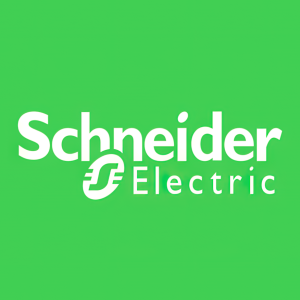Schneider Electric Announces Innovative Tax Credit Transfer Agreement with ENGIE to Accelerate Progress Toward its 100% Renewable Energy Goal in North America
- None.
- None.
- Investment represents a new approach to using the transferability clause in the IRA to accelerate corporate renewable energy procurement.
- Tax credit transfer opportunity brings company closer to meeting its renewable electricity target in the
U.S. andCanada .
The contracted projects are expected to come online throughout 2024 and will enable Schneider Electric to get closer to its
The agreement between ENGIE, a leader in the net-zero energy transition, and Schneider is among the first at this scale to take advantage of new tax credit transfer provisions in the Inflation Reduction Act (IRA) that will help companies meet their renewable energy goals.
"Schneider Electric is committed to achieving net-zero emissions across our operations by 2030. This new solar-plus-storage agreement for the
The IRA's transferability clause enables the transfer of eligible federal tax credits from renewable energy, clean energy manufacturing, and battery storage projects, among other clean energy projects. This new feature creates a feasible alternative to traditional tax equity structures. Tax credit transfer also enables Schneider's Scope 2 decarbonization when the investor-buyer procures associated environmental attributes as part of the transaction.
This is not the first collaboration between Schneider Electric and ENGIE. Since 2017, the two companies have joined forces on multiple projects, and have led clients through their procurement of renewable energy via virtual power purchase agreements (VPPAs) that exceed 1.6GW in total in
"This collaboration with Schneider signals a real step forward in accelerating the net-zero transition. The solar-plus-storage portfolio, coupled with the innovative tax credit transfer structures enabled by the IRA, helps expand the opportunities for an increasing set of corporate clients to meet their goals," said Dave Carroll, Chief Renewables Officer and SVP, ENGIE North America. "This approach supports the continued growth of renewable energy and storage options in the
"Schneider Electric's North American renewable energy goal is commendable, and its advancement in accelerating its efforts. Schneider's work demonstrates both the power of collaboration with essential partners in the energy industry and the innovation necessary to progress actionable solutions in our nation's journey toward net zero," said Sheri Givens, President and CEO, Smart Electric Power Alliance (SEPA). "SEPA values its members' efforts in the clean energy transition, and Schneider's leadership serves as an example of those companies at the forefront."
According to Bloomberg (BNEF), the IRA's tax credit transfer rules create a new set of possibilities for funding America's energy transition. Most intriguing is the market for tax credits, which could greatly streamline the process of getting money to where it is most needed and is a step towards maturity as market participants discover together operating models that can scale.
Schneider Electric Tax Credit Investment Service
Schneider Electric was advised on the deal by consultants from its Sustainability Business, the world's largest advisor on corporate renewable energy procurement. Schneider provides these consulting services on tax credit transfers to clients to help them take advantage of the innovative opportunities created by the IRA. It is estimated by Credit Suisse that nearly
The tax credit transfer opportunities structured by Schneider Electric's advisory team allow companies to simultaneously reduce Scope 2 emissions, capture favorable risk-adjusted returns on investment, demonstrate environmental leadership, and accelerate progress toward decarbonization goals. This requires an understanding of complex regulations, market uncertainty, energy and environmental attribute markets, and technology maturity curves. With its 20+ years of renewable energy advisory experience, Schneider Electric is uniquely equipped to guide enterprises through the complexities of the new tax credit investment landscape.
Leveraging the IRA for both private and public sector
The IRA has proven to be significant for Schneider Electric's customers in the private, public, and residential sectors. The company has seen increasing demand for offsite and onsite renewable energy solutions and microgrid technologies using IRA-provided benefits, and growth in its residential consumer market in addition to corporate tax credit opportunities.
Schneider's Sustainability Business is also helping its
Learn more here.
About Schneider Electric
Schneider's purpose is to empower all to make the most of our energy and resources, bridging progress and sustainability for all. We call this Life Is On.
Our mission is to be your digital partner for Sustainability and Efficiency.
We drive digital transformation by integrating world-leading process and energy technologies, end-point to cloud connecting products, controls, software and services, across the entire lifecycle, enabling integrated company management, for homes, buildings, data centers, infrastructure and industries.
We are the most local of global companies. We are advocates of open standards and partnership ecosystems that are passionate about our shared Meaningful Purpose, Inclusive and Empowered values.
Follow us on: Twitter | Facebook | LinkedIn | YouTube | Instagram | Blog
Discover the newest perspectives shaping sustainability, electricity 4.0, and next-generation automation on Schneider Electric Insights.
Hashtags: #PressRelease #Sustainability #IRA
About ENGIE North America
Based in
![]() View original content to download multimedia:https://www.prnewswire.com/news-releases/schneider-electric-announces-innovative-tax-credit-transfer-agreement-with-engie-to-accelerate-progress-toward-its-100-renewable-energy-goal-in-north-america-302065674.html
View original content to download multimedia:https://www.prnewswire.com/news-releases/schneider-electric-announces-innovative-tax-credit-transfer-agreement-with-engie-to-accelerate-progress-toward-its-100-renewable-energy-goal-in-north-america-302065674.html
SOURCE Schneider Electric








